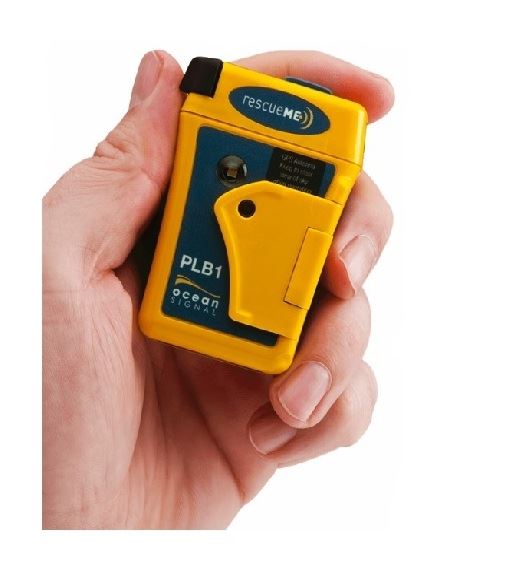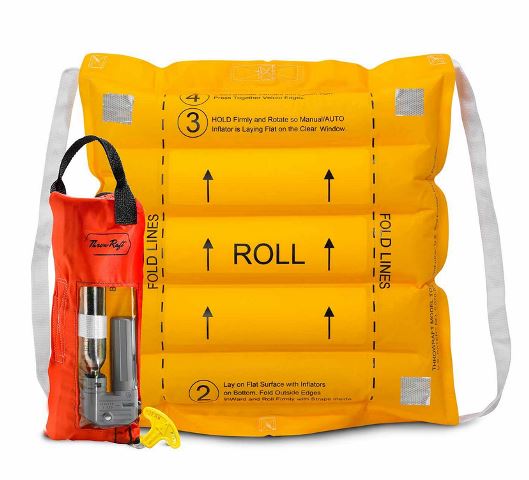Bulky, square orange life vests have given way to more comfortable belt- or harness-style inflatable floatation devices, yet many recreational boaters still carry only the former aboard. Are boaters up-to-date on today’s newest technology-inspired boating safety gear? With the holidays around the corner, the nonprofit BoatUS Foundation for Boating Safety and Clean Water offers a buying guide for technology geeks and anyone interested in innovation that increases safety aboard a boat.
 Handheld DSC-VHF Radio: Today’s portable, floating handheld VHF radios can be used anywhere aboard your boat, and are a great communications-navigation solution for small boats as well as a backup for larger vessels. Newest handhelds can incorporate GPS, Digital Selective Calling (DSC), one-button distress, Bluetooth, an FM receiver, and even SOS blinking lights giving boaters more ways than ever to keep out of trouble or speed a rescue. Models start at $200. Before you use your DSC-VHF radio, be sure to get your radio’s Maritime Mobile Service Identity Number (MMSI) that is your vessel’s unique ID. BoatUS members may request one for free. Tip: Adhere this number along with the owner’s contact information to the radio – it will help with future registration changes.
Handheld DSC-VHF Radio: Today’s portable, floating handheld VHF radios can be used anywhere aboard your boat, and are a great communications-navigation solution for small boats as well as a backup for larger vessels. Newest handhelds can incorporate GPS, Digital Selective Calling (DSC), one-button distress, Bluetooth, an FM receiver, and even SOS blinking lights giving boaters more ways than ever to keep out of trouble or speed a rescue. Models start at $200. Before you use your DSC-VHF radio, be sure to get your radio’s Maritime Mobile Service Identity Number (MMSI) that is your vessel’s unique ID. BoatUS members may request one for free. Tip: Adhere this number along with the owner’s contact information to the radio – it will help with future registration changes.
Personal Locator Beacon (PLB): Just a little bigger than a Tic Tac breath mint container, today’s PLBs can be carried in a shirt or life vest pocket, or easily attached to clothing or outerwear. Costs have also come down, with prices starting at a little over $100. Some organized boating events such as sailboat races increasingly require PLB wear, but if you don’t want to purchase them for your entire crew the BoatUS Foundation rents PLBs for as little as $7 a day.

Inflatable Life Jacket: Today’s smallest inflatable life jackets, worn belt-style across the waist, are incredibly not much larger than a box of mac and cheese. However, while they do provide for U.S. Coast Guard life jacket wear requirements, manually activated (yank the cord) inflatables need to be donned while in the water and are not intended for the unconscious. For that, harness-style inflatables can be utilized in automatic mode, which will keep the victim’s head above the water. Belt-style life jackets generally start at under $100, while harness-styles start around $150. At about $200, hybrid life jackets also offer a mix of inflation and foam floatation, keeping them smaller yet allowing for comfort and a full range of movement.
Throwable Life Saving Device: Technology has even come to the basic throwable device, a U.S. Coast Guard-required safety item meant to be kept within arm’s reach while underway. The most common is a floating seat cushion. However, the newest throwable devices are much smaller, simple to stow and touted as easier to toss to a crewmate in the water. Once the device hits the water, a rescue yellow raft automatically inflates offering a minimum of 20 pounds of floatation. One caveat: Like inflatable life jackets, they require an annual inspection. Prices start around $150.
To learn more about BoatUS and their services, visit www.boatus.com.

